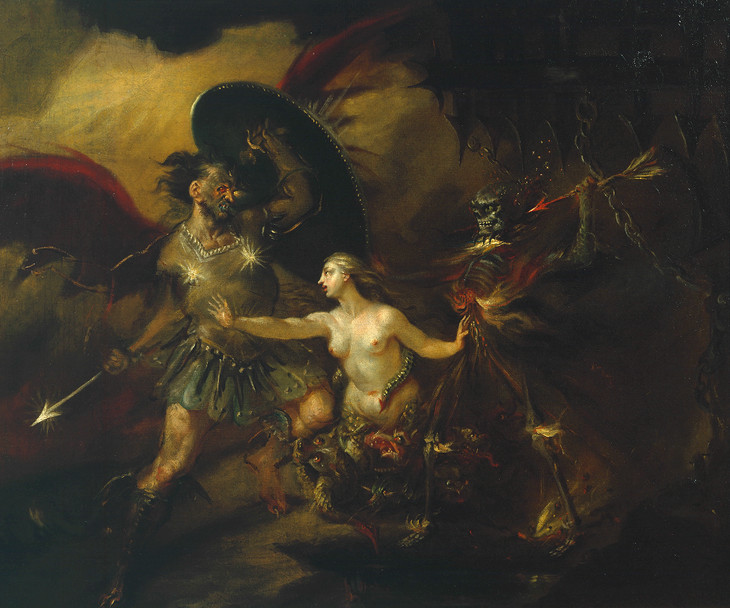William Hogarth Satan, Sin and Death (A Scene from Milton's 'Paradise Lost') c.1735–40

William Hogarth 1697–1764
Satan, Sin and Death (A Scene from Milton's 'Paradise Lost') c.1735–40
Oil paint on canvas
support: 619 x 745 mm; frame: 803 x 935 x 80 mm
Tate T00790
Purchased 1966
William Hogarth 1697–1764
Satan, Sin and Death (A Scene from Milton's 'Paradise Lost') c.1735–40
Oil paint on canvas
support: 619 x 745 mm; frame: 803 x 935 x 80 mm
Tate T00790
Purchased 1966
Hogarth’s unfinished oil sketch is an illustration to John Milton’s epic poem, Paradise Lost. Satan, on the left, confronts Death who bars his way from hell to earth. Between them is Sin, shown as a naked woman. She reveals to Satan that she is his daughter, and that Death is their incestuous child. This is one of the earliest paintings devoted to a subject from Milton and predates Burke’s seminal Enquiry into ... the Sublime and Beautiful, 1757, in which this passage from Milton and the description of Death are singled out as an absolute example of the sublime.
How to cite
William Hogarth, Satan, Sin and Death (A Scene from Milton's 'Paradise Lost') c.1735-40, in Nigel Llewellyn and Christine Riding (eds.), The Art of the Sublime, Tate Research Publication, January 2013, https://www
